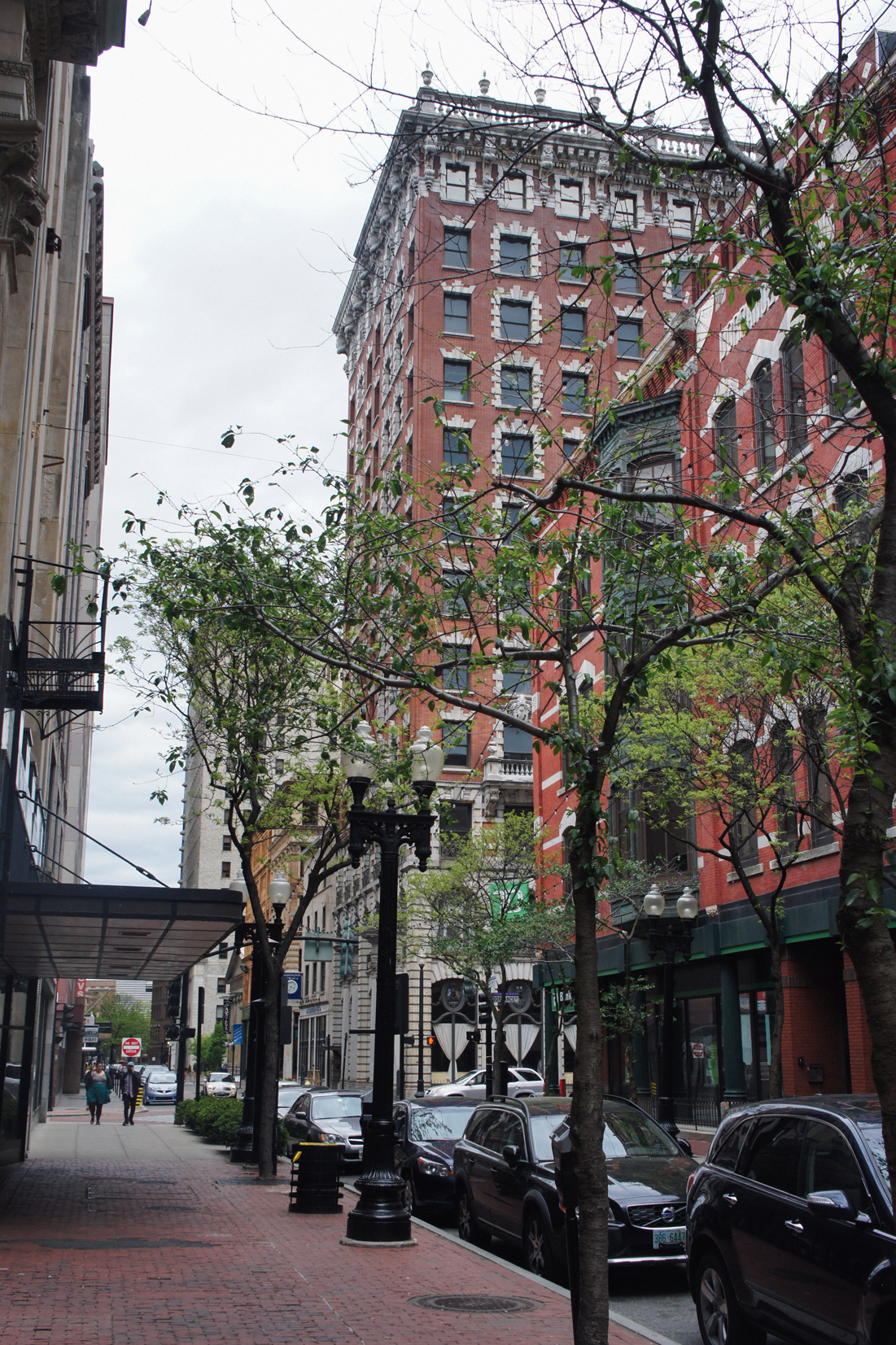True Travels: A Brief History of Providence
The first thing I see as the train pulls into Providence Station is a mile-high sign in the sky. It reads “Snookers’ Billiards,” and I wonder what I’ve gotten myself into.
Providence, Rhode Island, has never been a place on my to-do list, until I had some time to kill in between a weekend in Boston and a weekend in New York. After growing up on Seattle’s rocky inlets and recently visiting white sand paradise in St. Thomas and St. Maarten, I’ve become increasingly curious about the beaches of the East Coast. My email to the Rhode Island Board of Tourism is met with open arms, and I’m invited to spend a few days in Providence and Newport to see what they have to offer.
Downcity Arts District
Providence River canal
When I think of American History, Massachusetts and Pennsylvania and even Virginia are three hubs that come to mind. Rhode Island has never struck me as a place to add to my bucket list, but as the birthplace of religious freedom in America and one of the oldest cities in our nation, I wonder if it should have been. I like it as soon as I’m rolling my suitcase down Fountain Street. The Dean Hotel is my destination, and it’s already a lot to take in: the 52-room, super-hip property was a homeless shelter during the Great Depression, then a strip club and brothel after that.
I learn this and more sitting on my soporific white bed before I finally foray into the countless Rhode Island brochures I have to peruse. Roger Williams founded Providence in 1636 as a place to practice minority religions freely. Religious freedom is one of the absolutely dynamic identities we have as a nation, and I'm floored learning of its birthplace as I sit in the middle of where it happened. I decide my first excursion will be paying a visit to the fellow. With a latte and a warm pretzel roll in hand, I’m off to Prospect Park.
Providence Park
I don’t bring a map with me since I can practically see the two-story memorial from where I stand on the sidewalk. I head in its general direction. A beautiful white chapel stands in front of me once I cross the river—stately for how small it is—and my first thought is that it’s very pretty. After a few more steps, a sign tells me it’s the very first Baptist church in America.
The first Baptist church in America
New England really likes to hit you over the head with its historical significance.
This colonial era fascinates me, but it doesn't set the same fire in me as the Revolution (thanks to Lin Miranda for that). Providence was the site of the first bloodshed event in the Revolution, known as the Gaspee Affair. I learn this strolling through the John Brown House Museum, an audio tour recording in my ear and Google in my hands. As a retaliation to the Sugar Act, a British ship was forced into the shallows and ran aground. Residents of Providence, including Brown, set fire to the ship that night. Bye, Gaspee!
Rhode Island State House
From Prospect Park, I have a wide-angle view of the Rhode Island State House. It’s located directly behind the train station, so we were introduced upon my arrival, but I have a better sense of its massive size in comparison to other buildings in town. I squint my eyes and picture myself back in Rome, Italy, viewing St. Peter’s Basilica from the Ponte Sant’Angelo, sizing up another comparison. Completed in 1901, the Rhode Island Statehouse is one of the largest freestanding marble domes in the entire world, right in the ranks of St. Peter’s and the Taj Mahal.
Another thing that puts Providence into perspective is the big-name figures that paid once-in-awhile visits. I’ve always had a little crush on George Washington, so I get a kick out of seeing his name pop up in the historical accounts I run into. The oldest vehicle in America sits quietly in John Brown’s garage he calls a carriage house, which Washington is rumored to have taken a ride in during an eighteenth-century road trip.
John Brown House Museum carriage
The other city sight that draws me to a stop as I walk down Weybosset Street is the Arcade, the oldest indoor shopping mall in America. I totally forget that it’s something I’ve heard of before until I’m standing in front of it. I was a mall-obsessed pre-teen and had a list of important ones to visit before I died, like West Edmonton and the Mall of America, and with its flag waving in the Rhode Island breeze, the Arcade reminds me that it was one of them. It’s small and full of stores I’ve never heard of, but conceptually, my ten-year-old soul is immensely satisfied.
The Arcade, oldest indoor shopping mall in America
The incredible volume of history I absorb from one street to the next turns Providence from a sleepy town of charming peculiarity into so much of a historical landmine that I wonder why I haven’t discovered it before now. Providence seems to have been glossed over in favor of bigger historical events in bigger cities, despite the significance of its small-scale affairs. Too soon, I’m on the train to New York, continuing my tour of East Coast cities that’s already turning out to be more than I bargained for. I love what I’ve gotten myself into.






